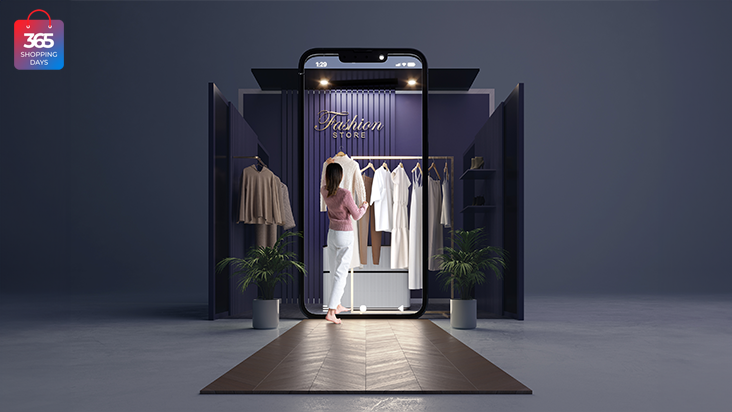The world of online fashion shopping has undergone a significant transformation with the introduction of virtual try-on tools. These innovative technologies have not only revolutionized the way consumers shop for clothing but have also addressed longstanding challenges related to sizing, fit, and the overall shopping experience. Virtual try-on tools have bridged the gap between the digital realm and the physical act of trying on clothes, offering a new level of convenience, accuracy, and personalization.
The Challenge of Online Sizing and Fit
One of the most common frustrations for online shoppers has been the uncertainty of how a garment will fit them. Sizing discrepancies between brands and the inability to physically try on clothes have led to high return rates, creating inconveniences for both consumers and retailers. This challenge has hindered the growth of the online fashion industry and left consumers wary of making online purchases, particularly when it comes to items like clothing that require the perfect fit.
Enter Virtual Try-On Tools
Virtual try-on tools utilize advanced technologies such as augmented reality (AR) and artificial intelligence (AI) to create a simulated fitting room experience. Through these tools, shoppers can virtually try on clothing items using their smartphones, tablets, or computers. By simply uploading a photo or activating their device’s camera, users can see how a garment would look on them in real-time. These tools map the clothing onto the user’s body, considering factors like size, body shape, and movement.
- Warby Parker: Warby Parker, an eyewear brand, offers a virtual try-on tool that allows customers to see how different frames would look on their face. Users can upload a photo or use their device’s camera to superimpose virtual glasses onto their image, helping them make an informed choice before purchasing.
- Sephora Virtual Artist: Sephora’s Virtual Artist tool uses augmented reality to let users virtually try on different makeup products. Shoppers can experiment with various shades of lipstick, eyeshadow, and more, allowing them to find the perfect colors without needing to physically apply the products.
- ASOS Virtual Catwalk: ASOS, an online fashion retailer, introduced the Virtual Catwalk feature that enables customers to see how clothing items move and fit on a range of body types. This tool uses 3D models to simulate real-world movement and provide a more accurate representation of how the garments will look.
- Nike Fit: Nike Fit is an app that uses augmented reality to measure users’ feet and find their precise shoe size. This helps customers select the correct size when shopping for shoes online, reducing the likelihood of ordering the wrong fit.
- Ray-Ban Virtual Mirror: Ray-Ban’s Virtual Mirror tool enables users to virtually try on different sunglasses frames in real-time using their device’s camera. This tool provides a 3D representation of how the frames will look from different angles.
- Modiface by L’Oréal: Modiface offers virtual try-on tools for various beauty products, including makeup, hair color, and skincare. It allows users to experiment with different looks and products, helping them visualize how the items will enhance their appearance.
- Drest: Drest is a virtual styling app that lets users create and style digital outfits using real designer fashion items. It combines virtual try-on with gaming elements, allowing users to explore and experiment with high-end fashion.
- Zara AR App: Zara’s AR app includes a virtual try-on feature that lets users visualize how selected items of clothing will look on a model. Users can point their device at specially marked areas in Zara’s physical stores to see models wearing the selected outfits.
- Macy’s Virtual Dressing Room: Macy’s introduced a virtual dressing room feature that enables users to try on clothing items virtually using an in-store kiosk. The technology takes into account the user’s body shape to provide a more accurate representation.
- GAP DressingRoom: GAP’s DressingRoom app allows users to virtually try on different clothing items on their mobile devices. Users can create digital avatars that accurately reflect their body shape and size, enhancing the accuracy of the virtual fitting experience.
Benefits for Consumers
- Enhanced Confidence: Virtual try-on tools empower consumers to make confident purchasing decisions by allowing them to visualize how a garment will look on their unique body shape before buying.
- Reduced Returns: The ability to virtually try on clothes significantly reduces the likelihood of returns due to sizing or fit issues. This leads to a more sustainable and efficient shopping process for both consumers and retailers.
- Convenience: Shoppers can try on clothes from the comfort of their own homes, eliminating the need to physically travel to stores or dressing rooms.
- Personalization: Some virtual try-on tools are equipped with AI algorithms that provide personalized recommendations based on the shopper’s preferences and previous purchases.
- Exploration of Styles: Consumers can experiment with different styles, colors, and sizes without committing to a purchase, helping them discover new looks and trends.
Benefits for Retailers
- Reduced Returns and Costs: As return rates decrease, retailers save on shipping and restocking expenses, leading to improved profitability.
- Enhanced Customer Engagement: Virtual try-on tools create an engaging and interactive shopping experience, fostering brand loyalty and customer satisfaction.
- Data-Driven Insights: Retailers can gather valuable data on customer preferences, body measurements, and fitting choices, aiding in inventory management and product design.
- Competitive Edge: Adopting virtual try-on tools positions retailers as tech-savvy and forward-thinking, attracting a modern customer base.
The Future of Virtual Try-On Tools
As technology continues to evolve, the capabilities of virtual try-on tools are expected to expand even further. Features like 3D scanning for accurate body measurements, improved realism in virtual fitting, and integration with social media for instant feedback are just a few potential developments on the horizon. Moreover, these tools are likely to extend beyond clothing to accessories like eyewear, jewelry, and footwear, enriching the online shopping experience across the fashion spectrum.
In conclusion, virtual try-on tools have indeed revolutionized online fashion shopping by addressing longstanding issues related to sizing, fit, and customer confidence. Their ability to create personalized, immersive experiences has transformed the way consumers interact with fashion e-commerce. As these technologies continue to advance, the future of online fashion shopping holds great promise, offering a seamless fusion of technology and style that benefits both shoppers and retailers alike.



